📜 Table of Contents
- Introduction: A Story Before Ramayana Began
- Who Was Shanta in Ramayana?
- Shanta’s Adoption by the Kingdom of Anga
- The Sage Rishyasringa and the Curse of Drought
- A Sacred Marriage That Opened the Skies
- The Putrakameshti Yagna and Rama’s Birth
- Why Shanta Disappeared from Most Ramayana Versions
- Lessons from Shanta Ramayana: The Power of Silent Dharma
- FAQ About Shanta Ramayana
- Sources & References
Introduction: A Story Before Ramayana Began
Long before Sita crossed the line of fire,
Long before Hanuman leapt across the ocean,
There was a royal daughter who walked away from her palace… so that Rama could be born.
Her name was Shanta — a princess, a sage’s wife, and the firstborn of Ayodhya.
Yet most have never heard her name.
In this retelling of Shanta Ramayana, we uncover a story of sacrifice, silence, and sacred duty — one that predates the epic we know, yet makes it possible.
Who Was Shanta in Ramayana?
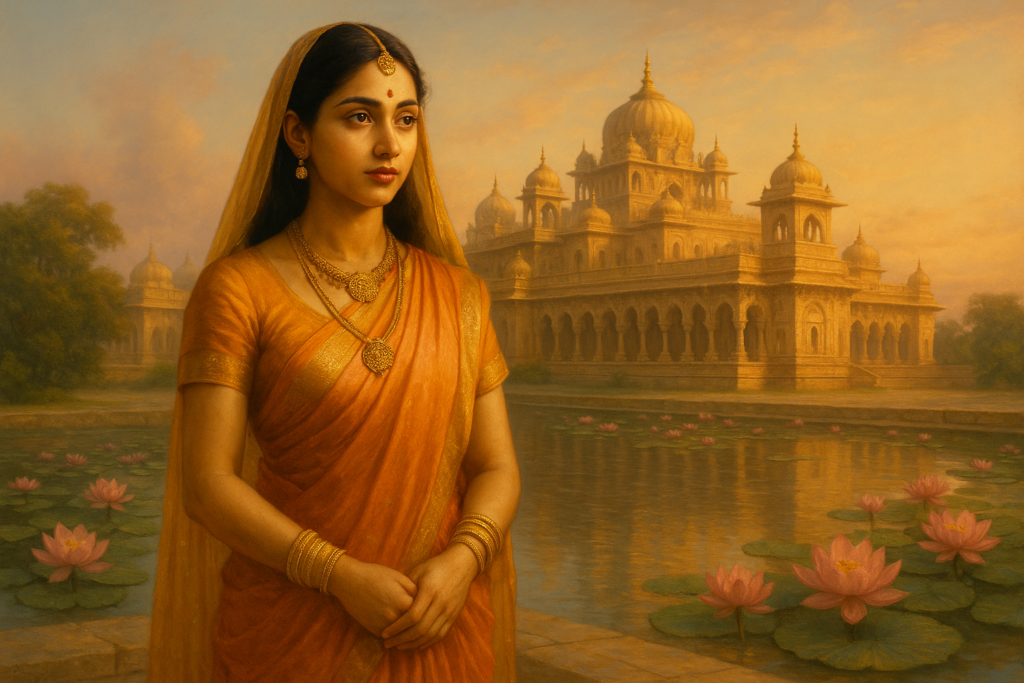
Shanta was the eldest child of King Dasharatha and Queen Kaushalya, born before Rama and his brothers.
Unlike the sons of Ayodhya, she vanished from the royal court early in life.
In most popular Ramayana versions, her name is missing altogether. But ancient scriptures and regional retellings confirm her existence — as the silent flame who lit the path for destiny to unfold.
Shanta’s Adoption by the Kingdom of Anga
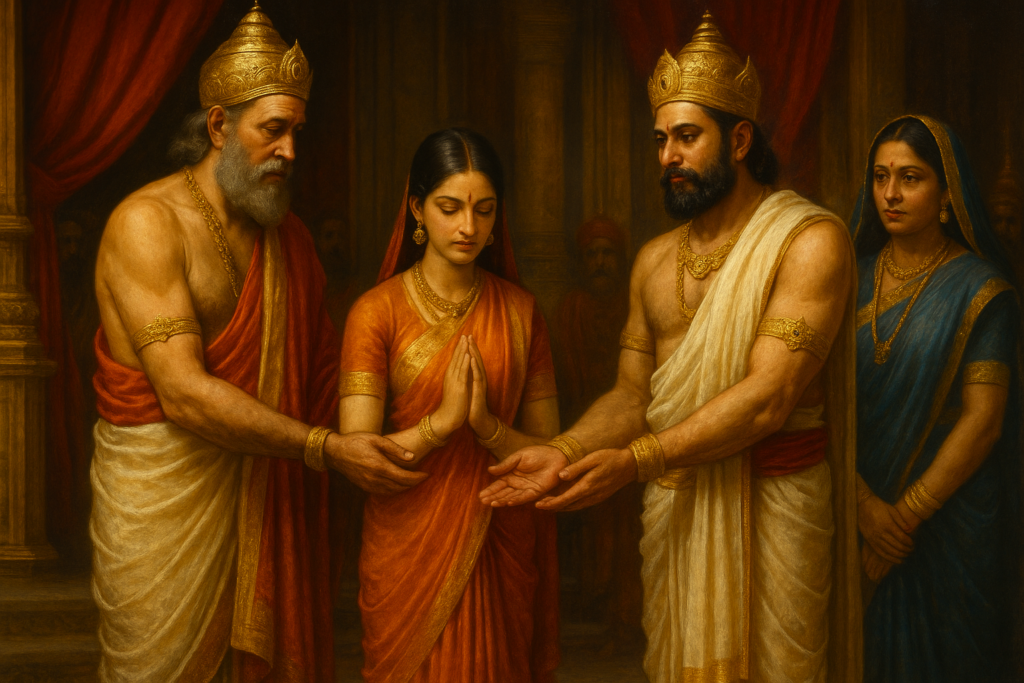
The nearby kingdom of Anga was suffering under a divine drought. Its king, Romapada, had no heir, and his land was cursed with famine and unrest.
To help his friend — and perhaps under pressure of political alliances — King Dasharatha gave Shanta in adoption to Romapada and his queen.
Shanta was raised as the princess of Anga, leaving behind her lineage in Ayodhya… and stepping unknowingly into history.
The Sage Rishyasringa and the Curse of Drought
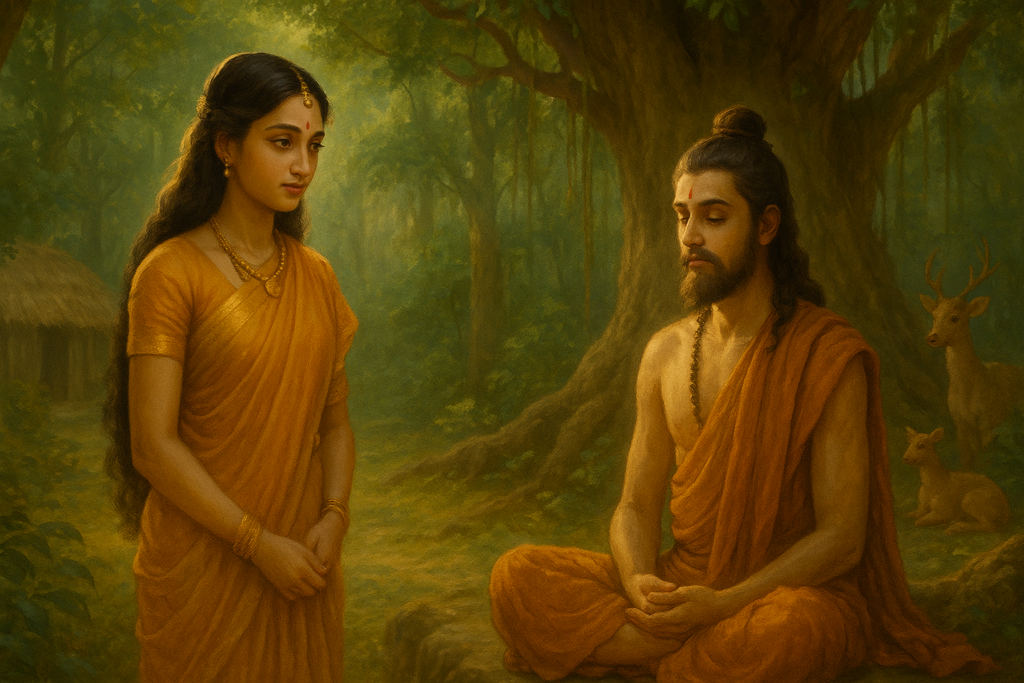
In the remote forests, lived a sage of unusual purity — Rishyasringa, son of Vibhandaka, raised in isolation, untouched by society, and unaware of women.
His presence was said to bring rainfall. His celibacy held mystical power.
Romapada, desperate to save his people, devised a plan. Women were sent to lure the sage. When Rishyasringa arrived in Anga, the skies opened and rain fell again.
As gratitude — and perhaps divine destiny — Romapada gave him Shanta in marriage.
A Sacred Marriage That Opened the Skies
Shanta and Rishyasringa became a divine couple — united in purpose and purity.
Their marriage not only ended a kingdom’s suffering, it also bridged two dynasties: Anga and Ayodhya.
It was this union that would later bring Rishyasringa to Ayodhya — and to the most sacred duty of all:
The Putrakameshti Yagna.
The Putrakameshti Yagna and Rama’s Birth
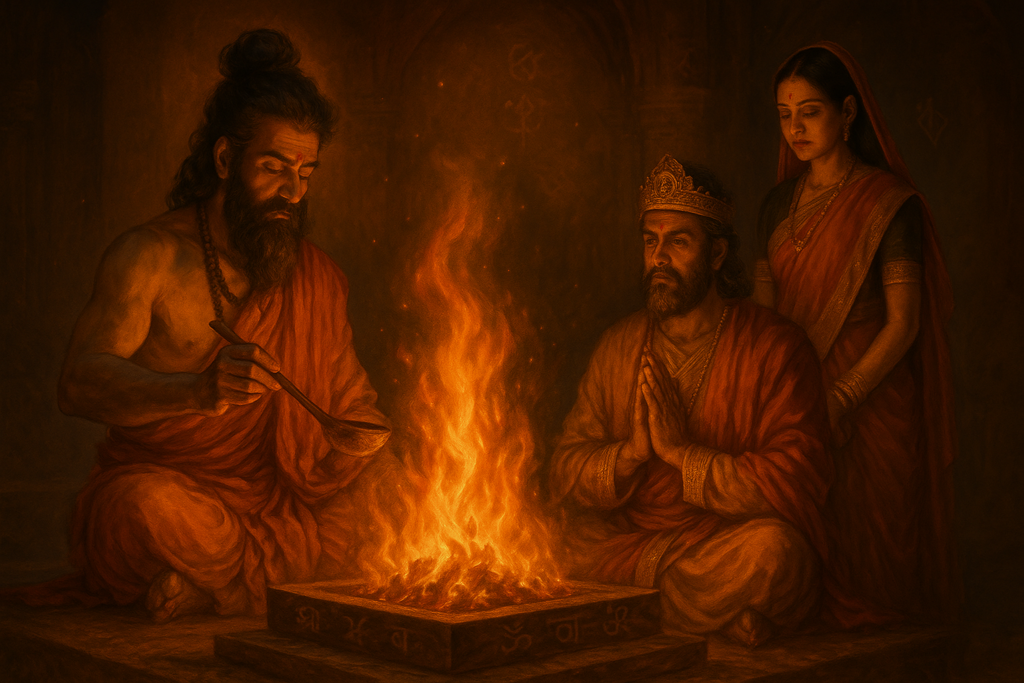
Back in Ayodhya, Dasharatha remained childless, despite his three queens.
He sought divine intervention.
At the request of his advisors, Rishyasringa — now Dasharatha’s son-in-law — was invited to perform the Putrakameshti Yagna, a sacred ritual to invoke sons.
From the fire emerged a divine payasam (elixir), which Dasharatha divided among his queens.
Soon after, were born:
- Rama to Kaushalya
- Bharata to Kaikeyi
- Lakshmana and Shatrughna to Sumitra
And thus, the Ramayana began — all made possible by the quiet return of Shanta to Ayodhya, through her husband.
Why Shanta Disappeared from Most Ramayana Versions
Despite her pivotal role, Shanta vanished from many versions of the epic. Why?
- Textual Omission: Some major retellings, like the Ramcharitmanas, streamline the story, omitting her completely.
- Patriarchal Lens: Focus was often placed on sons, not daughters, in royal genealogies.
- Narrative Simplicity: Shanta’s tale ends before the main events of the Ramayana, so she’s left out to maintain flow.
Yet, in scriptures like the Valmiki Ramayana, Vishnu Purana, and Bhagavata Purana, her story lives on — as does her impact.
Lessons from Shanta Ramayana: The Power of Silent Dharma
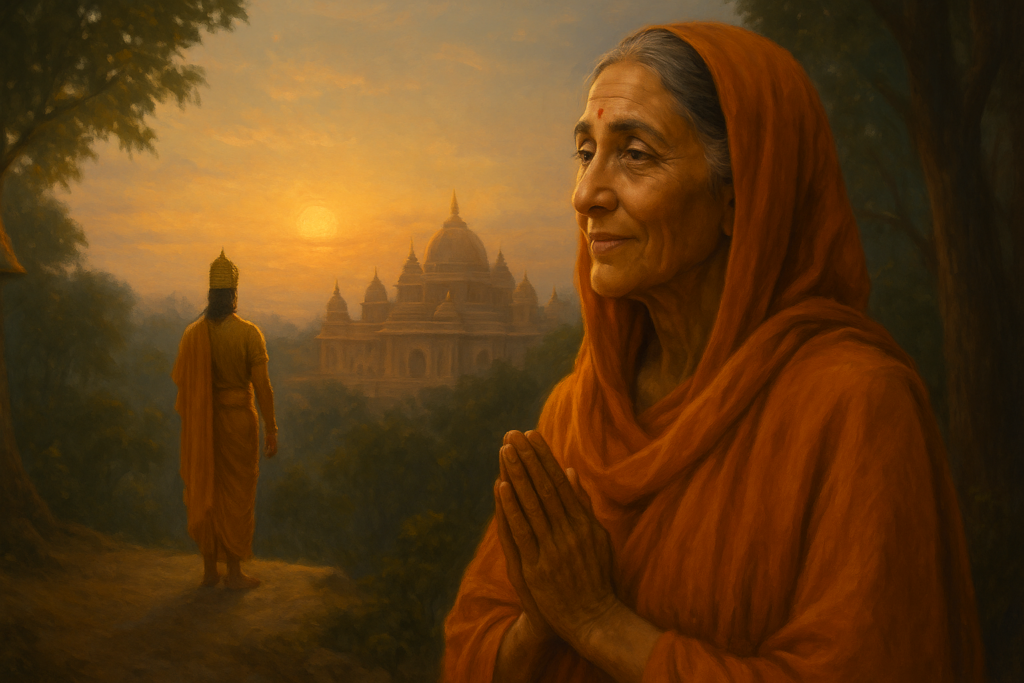
Shanta never fought in battle. She didn’t demand justice. She didn’t return to the palace for glory.
And yet:
- She bridged kingdoms
- She ended drought
- She enabled Rama’s birth
Her story teaches us that not all warriors wear armor.
Some serve dharma in silence — with grace, sacrifice, and surrender.
Shanta Ramayana is not a forgotten tale…
It’s a reminder that destiny often begins with a quiet step into the unknown.
FAQ About Shanta Ramayana
Q1: Who was Shanta’s real father?
King Dasharatha of Ayodhya. She was later adopted by King Romapada of Anga.
Q2: Did Shanta appear in the Valmiki Ramayana?
Yes. She is mentioned in connection with the story of Rishyasringa and the Putrakameshti Yagna.
Q3: Why don’t we hear about her in most Ramayana stories?
Later retellings focused on Rama’s immediate family and simplified the narrative. Shanta’s role concluded before Rama’s birth, so she was often omitted.
Q4: What was her greatest contribution?
By marrying Rishyasringa and bringing him to Ayodhya, she enabled the yagna that led to Rama’s birth — shaping the entire epic.
Q5: Is Shanta worshipped or remembered anywhere today?
In regions like Odisha, Himachal, and parts of Andhra, she is remembered through oral stories and folk traditions — often as a symbol of quiet strength.
Sources & References
- Valmiki Ramayana, Bala Kanda
- Srimad Bhagavatam (Canto 9)
- Vishnu Purana
- Mahabharata (Vana Parva)
- Krittivasi Ramayana (Bengal)
- Odia, Telugu, Bundeli, and Tamil folk traditions
- Contemporary scholarly interpretations and mythology columns
